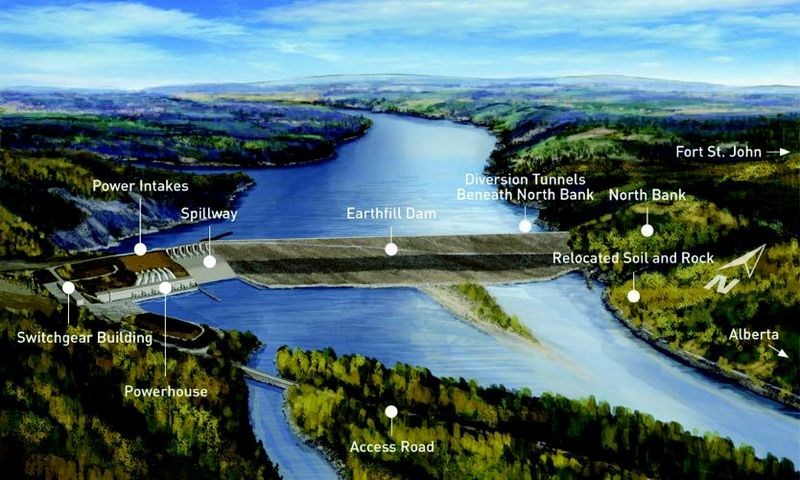BC Hydro ratepayers will be forking over the estimated $7.9 billion to build the Site C hydroelectric dam on the Peace River - up from the initial $2 billion estimate, said B.C. Hydro spokesperson David Conway during a presentation to Prince George city council Monday.
The new price tag includes projections for cost inflation during construction, said Conway.
"The cost of the project would be underwritten by the ratepayers of B.C. However the rate impact will be deferred until the dam starts producing power," said B.C. Hydro spokesperson David Conway. "The project is extremely cost-effective - about $87 to $95 per megawatt."
In a recent call for private, green power projects, B.C. Hydro saw an average price of $125 per megawatt, Conway said.
Conway was in Prince George to show off the updated design for the proposed dam southeast of Fort St. John.
It has been redesigned to increase the power output, add a passive backup spillway and improve seismic safety, Conway said.
"It's still an earthfill dam. The concrete structures have been realigned," Conway said.
The proposed dam would have a power capacity of 1,100 megawatts - enough to power 450,000 - compared to 900 megawatts with the historic design, he said.
Changing the alignment reduces the dam's footprint, while increasing its stability. The addition of a passive spillway is another safety feature built into the dam, he said.
"Should the automatic spillways fail, the passive spillway could spill all the water needed," Conway said.
POWER DEMANDS CREATE NEED
B.C. Hydro currently can't keep up with peak power demand in the province, he said, which is only expected to rise 40 per cent in the next 20 years.
The provincial government has mandated an objective of making B.C. energy self-sufficient by 2015.
"It allows us to add more incremental power," Conway added. "Hydro is a very good tie in with incremental power like microhydro and wind."
Conway said construction of the dam would generate approximately 7,000 person-years of direct employment and up to 35,000 direct and indirect jobs.
In May, B.C. Hydro applied for provincial and federal environmental approval for the project. Consultation with First Nations and communities is ongoing, Conway said. The utility company is working with the regulators to define how the consultation process will happen.
The assessment process is anticipated to take 18 months.
GREENS CONCERNED
And the project is not without environmental impacts. The 83-kilometre-long reservoir will flood approximately 5,340 hectares. Of that area, approximately 2,900 hectares is land suitable for agriculture.
Green Party of Canada deputy leader Adriane Carr said there are better ways the Crown corporation could spend $7.9 billion of ratepayers' money.
"Hydro has huge potential and it can be clean and green. [But] the scale of Site C is wrong," Carr said.
Flooding reservoirs has a permanent impact on the landbase and has left B.C. with a legacy of unresolved First Nations land claims, she said.
B.C. Hydro could put the money to better use by aiming for "low-hanging fruit" like improving energy efficiency, she said.
"What could you do with that kind of money to conserve energy? Every household in B.C. could be given energy retrofits," Carr said. "It's about what is your most cost-effective solutions."



